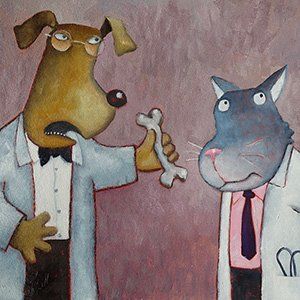cover story one
Connecting Primary and Specialty Care
Improving medical practice
By Elizabeth Seaquist, MD
Advances in medical science are increasing exponentially. New methods of diagnosing and treating illness are developed faster than they can be practically incorporated into best practice. At the same time demand for health care services exceeds supply and workforce shortage issues add difficult new dynamics to the process of keeping pace with change. Physicians are expected to schedule so much of their time around seeing patients; it can be sometimes forgotten that providing the best care requires research and communication beyond what occurs in the exam room.
cover story two
Patients and Medical Jargon: A study of misunderstandings
By Emily Hause, MD and Jordan Marmet, MD
Hi. I’m Dr. Emily Hause, the pediatric rheumatology fellow. Let’s discuss the results from your recent labs: your CBC, ESR and CRP were unremarkable. Your creatinine remains a bit high at 1.4, and the EKG looked good. I’ll check with my attending about discharging you from the hospital today. You’ll need to follow up with your PCP, who may make a referral to Nephrology. Do you have any questions?
Behavioral Health
The Mental Health Collaboration Hub: Improving hospital bed access
BY TODD ARCHBOLD, LSW, MBA
Several recent news articles have highlighted the mental health crisis in our state—where children and youth are boarded in emergency departments while they await appropriate treatment in inpatient facilities and/or safe living environments. One Minneapolis-based hospital system reported as many as 20 children are boarding in its hospital emergency departments or pediatric units while awaiting inpatient beds where they could receive the more specialized care they require.
Rural Health
Value-based Reimbursement: A rural health perspective
BY Terry J. Hill, MPH
Dr. Don Berwick, head of the Institute of Health Improvement (IHI) in 2008, coined the term, Triple Aim. He proposed American health care reform based on:
- Better patient care.
- Improved community health.
- Smarter spending.
Rural Health
Outstate Community Health Resources: Helping patients close to home
BY Hailey Baker and Mahtahn Jenkins
While one in five Americans call rural communities home, only one in ten physicians currently practice in rural communities. Like most states, Minnesota faces challenges maintaining an adequate health care workforce in its rural areas, a situation that has only become worse as a result of the COVID-19 pandemic. According to the Minnesota Department of Health, only 10% of licensed health care workers in our state care for rural Minnesotans, even though 40% of Minnesotans live in rural areas.












